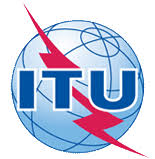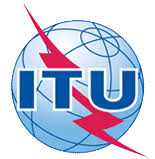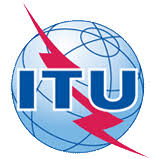Taxonomy and Definitions for Connected and Automated Vehicles
This standard specifies the taxonomy and definitions for connected and automated vehicles.

This standard specifies the taxonomy and definitions for connected and automated vehicles.

Recommendation ITU-T X.1602 analyses the maturity levels of software as a service (SaaS) application and proposes security requirements to provide a consistent and secure service execution environment for SaaS applications. These proposed requirements originate from cloud service providers (CSP) and cloud service partners (CSN) as they need a SaaS application environment to meet their demands on security. The requirements are general and independent of any service or scenario specific model (e.g. web services, or representational state transfer (REST)), assumptions or solutions.

Link Aggregation allows parallel point-to-point links to be used as if they were a single link and also supports the use of multiple links as a resilient load-sharing interconnect between multiple nodes in two separately administered networks. This standard defines a MAC-independent Link Aggregation capability and provides general information relevant to specific MAC types.

This standard specifies the operation of Bridge Port Extenders, including management, protocols, and algorithms. Bridge Port Extenders operate in support of the MAC Service by Extended Bridges.

This standard specifies how the Media Access Control (MAC) Service is supported by Bridged Networks, the principles of operation of those networks, and the operation of MAC Bridges and VLAN Bridges, including management, protocols, and algorithms.

The MAC Service and the Internal Sublayer Service (ISS) are defined in this standard. This standard specifies media-dependent convergence functions that map IEEE 802(R) MAC interfaces to the ISS. The MAC Service is derived from the ISS.
How Uniform Resource Name (URN) values are allocated in IEEE 802(R) standards is described in this amendment to IEEE Std 802(R)-2014.

OpenFog Consortium--OpenFog Reference Architecture for Fog Computing is adopted by this standard. OpenFog Reference Architecture [OPFRA001.020817] is a structural and functional prescription of an open, interoperable, horizontal system architecture for distributing computing, storage, control and networking functions closer to the users along a cloud-to-thing continuum of communicating, computing, sensing and actuating entities. It encompasses various approaches to disperse Information Technology (IT), Communication Technology (CT) and Operational Technology (OT) Services through information messaging infrastructure as well as legacy and emerging multi-access networking technologies

Recommendation ITU-T X.1364 analyses potential deployment schemes and typical application scenarios for narrowband Internet of things (NB-IoT). It specifies security threats and requirements specific to the NB-IoT deployments and establishes a security framework for the operator to safeguard new NB-IoT technology applications. Current developments in telecommunication technology in the mobile communication domain, are leading to changes in communication patterns from person-to-person to person-to-thing and thing-to-thing, making inevitable the evolution to the Internet of things. Compared to short distance communication technologies such as Bluetooth, ZigBee and others, cellular mobile networks characterized by wide coverage, mobility and extensive connections that bring richer application scenarios will become the main interconnection technology of IoT. NB-IoT is based on cellular mobile network technology, using a bandwidth of approximately only 180 KHz. It may be deployed on global system for mobile communication (GSM) networks, universal mobile telecommunications system (UMTS) networks or long-term evolution (LTE) networks directly to reduce costs and achieve a smooth upgrade. Based on its low power dissipation, wide coverage, low cost and high capacity, NB-IoT is expected to be massively adopted by operators with wide application in multiple vertical industries. As a new technology, NB-IoT has its own characteristics that may bring new security issues. In order to ensure security of NB-IoT deployments and applications, security threats and relevant security requirements specific to NB-IoT need to be analysed and an overall security framework for NB-IoT needs to be established.

The Recommendation X.1044 analyses security challenges and threats on Network Virtualization, and provides the security requirements on physical resources layer, virtual resources layer and LINP layer in Network Virtualization (NV).

Supplement 10 to the ITU- X series of Recommendations provides an overview of traceback for responsive measures to certain network issues within asingle or a more complex array of service providers. Traceback may assist in discovering ingress points, paths, partial paths or sources of problematic network events.
This information may aid service providers in mitigating such events.

Biometric technology in mobile devices is frequently used in various areas that require a high level of reliability, such as a smart car, e-banking, e-payment, telemedicine and e-healthcare services. In particular, it is necessary to implement countermeasures, which can pre-emptively cope with fake physiological biometrics to ensure mobile telebiometric data security, to presentation attacks. Recommendation ITU-T X.1094 specifies new secure and strong telebiometric authentication methods using biosignals.
